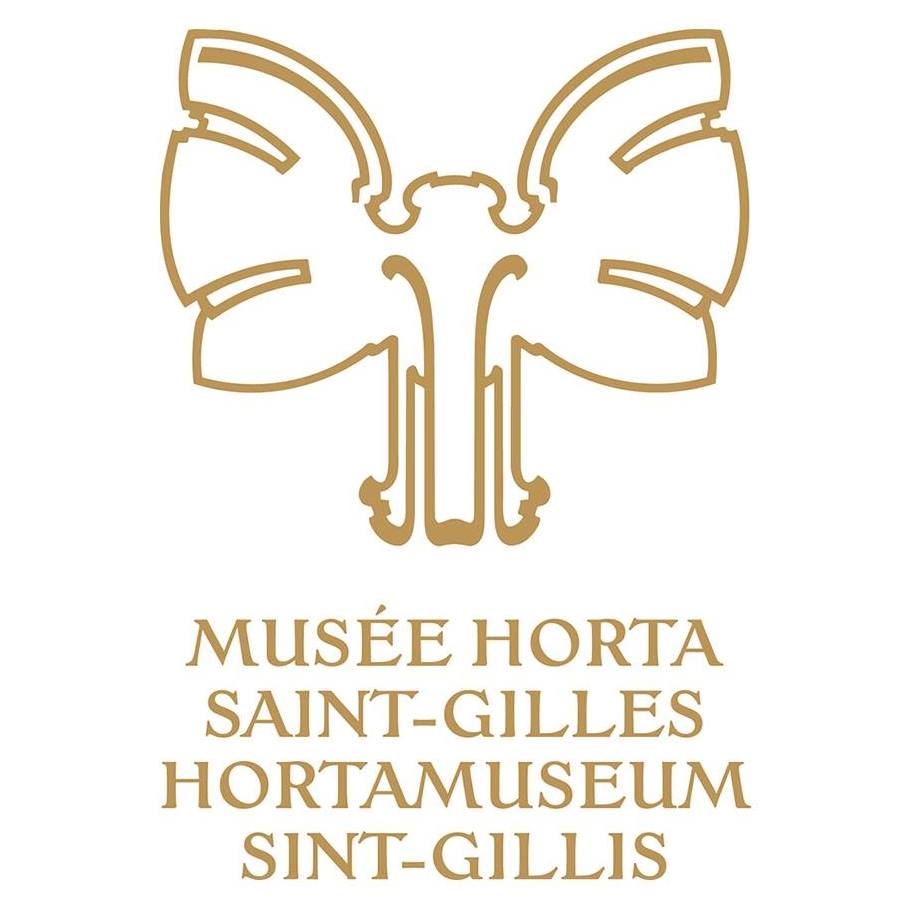For Johnny Leya
‘Every document of culture is at the same time a document of barbarism.’ I was reminded of that famous quote again as I was guided through the Style Congo exhibition at Brussels’ CIVA (Centre Internationale pour la Ville et l’ Architecture), an exhibition that focused on Belgian Congo pavilions for colonial exhibitions, with an emphasis on art nouveau. This “new art” was also called Style Congo at the time, as it seemed inextricably linked to the colony here in Belgium. Quite a few of Horta’s clients, for example, were involved in the colonial enterprise. Van Eetvelde, patron of the house of the same name, which this year reopened to the public after thorough restoration and houses an info point on art nouveau, was administrator general of Congo Free State. Materials were also eagerly used to win over the citizenry: ivory, African mahogany (Khaya), ebony, Bilinga and copper. The colonial draws Art Nouveau down to a visual language, down to stylized motifs, hidden or otherwise (we will return to this). Especially in the 1887 exhibition in Tervuren, with Hankar , van de Velde and especially Hobé in the starring roles, art nouveau was an ultimate propaganda tool for Leopold II’s colonial “adventure. The guide revealed that Leopold II did not get along with Horta, hence the latter was the great absentee.
We were shown around by the Johnny Leya, an Afro-Belgian architect from the firm Traumnovelle, the architectural collective that created the exhibition’s central installation, Congolisation, which chronologically hung the Congo pavilions at colonial exhibitions from 1885 to 1958. It was he who researched the archives of Archives d’Architecture Moderne (AAM), housed at CIVA, and unearthed material. I somewhat regret not bringing up the quote in Question Time, especially since it would have been of interest to our students. Because everyone should keep it in mind everywhere and always – that every document of culture is also always also a document of barbarism.
The German-Jewish essayist Walter Benjamin wrote that oneliner and monumental eye opener for every art lover in his theses on the concept of history. Because in that same thesis he speaks of the procession in which the spoils are carried away and displayed by the victors to their greater honor and glory, but charges that the sacrifice and suffering of the vanquished always remains invisible again, I have always thought he was referring to the world’s exhibitions or more specifically to the colonial exhibitions. For example, there was one in Paris in 1931 and one in 1937 when he stayed there. In CIVA it was shown that the Surrealists called for not going there. Since Benjamin wrote about world exhibitions as well as Surrealism in his Passagenwerk, which he was working on at the time, it is almost impossible for him to have missed these exhibitions and the commotion around them. Whether he visited them, we don’t know. But it is more than likely.
Benjamin had promised an essay on art nouveau in several letters to his friends, but it never materialized. So for the catalog of a major Horta exhibition at the Palais des Beaux-Arts in 1996, I put together all the pieces of the puzzle: ‘The Birth of Pleinairism from the Spirit of the Interior. Benjamin on Art Nouveau’. That text is still dear to me. Perhaps precisely because the task I set myself was so humbling: a reconstruction of an unwritten essay, almost a relaxation under my doctoral work on my then maître à penser, but also and especially because it was an ode to a childhood love of mine, Belgian art nouveau and Horta in particular. Although Benjamin nowhere refers to him – he does refer to his arch-rival van de Velde, who had worked in Germany and was quite famous there – Horta’s “underwaterworld” fits Benjamin’s fragments like a glove, forming a veritable Freudo-Marxist psycho-analysis of Art Nouveau. For just about all of the fragments attempt to interpret the ambiguity of the movement, between avant-garde and regression, between craft and technique, between progress and flight, between utopia and ideology, between nature and history, between the modern and the archaic, between inside and outside, between exterior and interior, all in an architecture as a total work of art. In few architectural oeuvres is this ambiguity so pronounced, so legible, as in Horta’s work. For example, when he prominently displays and disguises a central heating system in the entrance to his house simultaneously as a column. Or when he lined his dining room with white tiles intended for the outdoors. The formula with which Benjamin tries to summarize Art Nouveau reads, “The birth of pleinairism from the spirit of the interior is the vivid expression for the historical-philosophical situation of Art Nouveau: it is dreaming that one has awakened.” I am still sorry that I have not yet found a place for this essay in a book of mine. But, and this is the point, in my essay the theme of colonialism remains almost entirely absent.
How come? While I was also working on world exhibitions, for another essay, and therefore knew all the Belgian colonial exhibitions. Even that art nouveau Style was called Congo had, strangely enough, eluded me. I’ve had a soft spot for art nouveau since I was fifteen, and I can’t shake that fondness to this day. But the visit to this exhibition added a toxic sheen. Even in the 800 pages of notes and excerpts on every conceivable and unthinkable aspect of the nineteenth century in Benjamin’s Passagenwerk, colonialism remains just about completely out of the picture. How can that be?
It is a yucky blind spot in the view of our own history. That is an undeniable truth. In addition, there is perhaps another reason, especially from the perspective – and conscientiousness – of leftist intellectuals: capitalism has managed to overshadow colonialism as a theme, so to speak. While both are inseparable. The focus on the critique of capitalism, the exploitation of the proletariat, the rise of consumerism, commodity fetishism, the idea of progress, and so many aspects more, have obscured the black pages of colonial history. What happened outside Europe remained out of the picture in the process. For a long time, and to some extent to this day, it has remained the backside of the landscape. While I knew just about all the pavilions featured in the exhibition at CIVA. And Benjamin was contemporary with the heyday of colonialism and its propaganda exhibitions. Whatever the case, there’s no question: art nouveau was the style of a number of colonial exhibitions, and served that propaganda excellently, using Congo materials such as mahogany, ebony and ivory in a visual language that referred to lush African vegetation.
But on the other hand, it remains a difficult question to link a style inherently to a political constellation: German fascism used a classicist style, Italian fascism a modernist one, and a combination of both spread throughout Europe in the 1930s. Not simple to reduce that to an ideological expression, although one cannot deny that that “modernist classicism” often looks very authoritarian and hierarchical, think of the Royal Library in Brussels or the National Bank. But both buildings prove that the link with fascism is wafer-thin, quasi non-existent, it was simply a zeitgeist of ‘retour à l’orde’. Stravinsky and Picasso also adhered to a kind of classicism in the 1930s. So beware of reading a style 1 to 1 as an expression of an ideology.
Even with art nouveau I continue to believe that the constellation is rather accidental, the connection is there but it remains external, or at least contingent: there is also non-colonial art nouveau (Mackintosh, Hofmann) and there are also Congo pavilions in eclectic style, in art deco and in modernist style. The pavilion by Henri van de Velde or Eggerikx according to Traumnovelle’s booklet the makers for the 1937 Paris exhibition is modernist, or “modernistic,” as the Anglo-saxons call a certain kind of art deco. And also a famous modernist like Victor Bourgeois created the lavish restaurant Leopold II for the 1935 World’s Fair. Of course, there are also contaminations and “cultural appropriations,” such as art deco inspired by Egyptian and especially Aztec motifs. That kind of assimilation is especially evident in the designs of Henri Lacoste, who conceived a kind of modernist tribal hut architecture, with poster in matching exotic style, for the exhibitions of ’35 and ’39. Clear examples of cultural appropriation, but with an unerring sense of form. And so what? All styles are contaminated. Culture is a gigantic digestion of influences and fashions, a continuous contamination and appropriation.
Incidentally, the creators of the exhibition at CIVA are certainly not only moralists but also aesthetes, for the “renders,” the computer simulations they made of an unbuilt pavilion in the Congo, reveled in exotic aesthetics, where the glass-and-iron architecture accords wonderfully with the palms. It was one of aesthetic highlights of the exhibition. The magic of the Style Congo is toxic, at least intoxicating, they seemed to want to say. Point taken. That toxicity of colonial propaganda will forever remain a stain on Belgian art nouveau.
In the words of our guide, the makers wanted above all to ask questions, and they succeeded, without becoming dogmatic. And that danger exists: Geert Sels lashed out hard in De Standaard in his double review of the exhibition and the book Art Nouveau. Art with the K of Congo. Lucas Catherine’s book was dismissed with a few sneers about tendentious reduction (some leniency for a veteran of the committed, proletarian historiography of Brussels and Palestine might have been more fitting maybe). Granted, Lucas has written better books, but in his zeal to connect Congo style with the sins of colonialism, Catherine does dig up some material (I’ll come back to that), only he does too little with it. The exhibitionmakers, on the other hand, I would almost rather label as too cautious, too didactic, too unspoken, you have to work hard as a viewer to interpret their exhibit for yourself.
But they have a point: we can’t banish or demolish Art Nouveau either. Belgian Rwandan artist Laura Nsengiyumva recreated the equestrian statue of Leopold II that still dominates an entire square next to the Royal Palace in Brussels, untouched, life-size in ice, and a video shows it melting for days. It also makes for wonderful photographs and an unforgettable mental image. But in the so-called Congo Committee, she proposed that the statue actually melt. That is a bridge too far for me. You don’t melt statues, just like you don’t burn books. All sympathy for decolonization but this logic is too close for me to the Taliban blowing up Buddha statues. I do find it strange that no artists from the African diaspora, like Laura, are asked to create temporary installations around that statue so that it is never innocent or taken for granted again. I find this incomprehensible and in a way unacceptable. The empty Throne Square could well use some iconoclastic, decolonizing artistic energy.
Perhaps her proposal to melt down was only provocation, because in an interview with Libération she says that these statues can be preserved because, provided didactic vandalism, they can have a function in raising awareness: ‘On devrait pouvoir vandaliser ces monuments avec poésie pour qu’ils revèlent ce qu’ils ont vraiment à dire.’ We should be able to vandalize these monuments with poetry so that they would reveal what they really have to say. Very nicely said and I totally agree. A tendency towards playful or artistic vandalism also creeps up on me when I pass the equestrian statue of Leopold II at Place du Trône in Brussels in its unflappable self-assurance (The solidarity demonstrations with the Iranian protests last fall gave appointment there, hence I was confronted with it several times recently).
For me, that statue may even be removed and transferred to the Africa Museum, for example, but don’t melt it. That is too iconoclastic a logic. Then you answer the barbarism of exploitation by cultural vandalism, which is not artistic but itself barbaric. Understandable in a fit of popular rage, but unwise when one has the necessary distance in time, as we do now. It is too late to melt the statue of Leopold II. But in ice it is a masterpiece.
This kind of artistic de(con)structuring and mourning around contaminated heritage works well. Around the central pavilion exhibition, the CIVA curator had also gathered artists. A photographer, Chrystel Mukeba, confronts that by photographing Congolese people from the diaspora in Horta’s interiors. This has a very penetrating effect. You feel that they are at once out of place and completely in place, as missing links. I may never again be able to wander through the beautiful rooms of Brussels’ art nouveau masterpieces without seeing shadows of black people there.
Besides style nouilles, noodle style or spaghetti style, and also “poelinck style” (eel style) in the vernacular, art nouveau was also called “whiplash style” (zweepslagstijl, style coup de fouet). One of Vande Velde’s quotes that Catherine digs up cut deep with me. ‘Nous saisîmes la ligne comme un fouet. Un fouet dont les claquements sonores accompagneraient notre course aventureuse, dont les coups cingleraient l’épiderme d’un public indolent‘. (Retrieved from Van De Veldes Récit de ma vie). Luke’s translation is not literal enough for me; I will make another attempt: ‘We grasped the line like a whip. A whip whose sonorous blows gave momentum to our adventurous course, and whose blows would flog the epidermis of a pudgy audience’.
It cannot be that Henry van de Velde did not know that the whip or chicotte was one of the symbols of colonialism. Using them so militantly for an aesthetic struggle is distasteful and if you really dwell on the misdeeds of colonialism, slightly nauseating. Slavery with graceful panache. The whole quote stings brimming with colonial heroism; like colonization, the new style is an adventure. The word epiderme indicates that van de Velde is referring relatively directly to the corporal punishment with the whip of the Congolese forced laborers, just as he refers to their perceived laziness or fecklessness, which he transfers to the European public, the always ignorant, un-educated visitors to the colonial exhibition. The quote speaks of colonial cruelty with a good conscience. By the way, elsewhere he very virulently calls the whipping a “ligne de force,” “une ligne de violence.” Van De Velde points out that towards the end of the 1890s this Ligne Moderne diminished both with him and with Horta and Serrurier-Bovy as an organizing principle. He devoted quite a few pages to the power of the line as a design principle. It is a kind of vitalist approach. But that Nietzsche-inspired vitalism of van de Velde’s is here clearly a Herrenmoral, which does not suffer from the chastisement of impious slaves… The “whiplash style” will never again be innocent for me, either as a designation or as a phenomenon, however dear it always was to me.
Lucas Catherine also points us to the logo of the Les amis philantropes, the lodge of which Horta was a prominent member and earned him many of his clients: a white man taming an elephant. Reason conquering wildness, and Catherine shows how that elephant motif echoes with Van de Velde and Horta. Our guide’s tentative suggestion through the exhibition seems to be correct: The Horta House logo is indeed a stylized elephant head. And there is more than the logo: to this day, the Horta House still counts among its sponsors Umicore, heir to Union Minière du Kantanga. Same for the Africa museum, that part of its structure still needs some decolonization!
The motif of wildness and civilization also returns in one of the famous and infamous “chriselephantines” (that is, sculptures that combined ivory and gold, as well as ivory with bronze, this antique technique came back into fashion around the fin de siècle, as it was an ideal signpost for the possibilities of colonial materials, and by extension of colonial exploitation without more): Civilisation et Barbarie by Wolfers. The sculpture was purchased some years ago with public funds by the King Boudewijn Foundation and is on display at the Museum of Art and History. Along with a snake sculpture, it constitutes one of Wolfers’ most diabolical sculptures. Civilization is conquering and overpowering barbarism.
The magic of art nouveau will forever be a little toxic from now on, but the magic remains. And vice versa: in addition to the magic of art nouveau, we must be mindful of its connection to the barbarity of colonialism. There is nothing to be done about it: ‘All those who won the victory to this day march along in the triumphal march that carries the rulers over those who today bite the dust. According to common practice, the booty is carried in the triumphal procession. That booty is called: cultural goods. They will find in the historical materialist a detached observer. For what he surveys of cultural goods has for him, without exception, an origin which he cannot think of without horror. It owes its existence not only to the effort of the great geniuses who created it, but also to the nameless slave labor of their contemporaries. There is never a document of culture that is not also a document of barbarism.’
(this is the translation of the longer original version of a text written and published in Karakter, Tijdschrift van wetenschap, nr 83, Leuven, September 2023.)

















